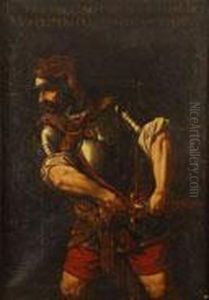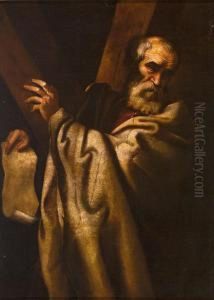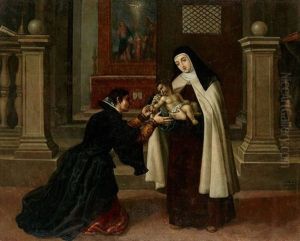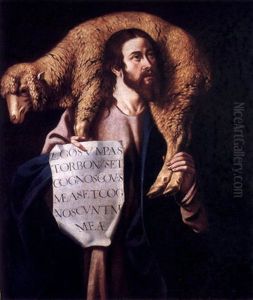Cristobal Garcia Salmeron Paintings
Cristóbal García Salmerón was a Spanish painter active during the Baroque period, born in 1603 in Cuenca, Spain. Although not as widely recognized as some of his contemporaries, Salmerón's work demonstrates the characteristic drama, emotion, and use of chiaroscuro that typify Baroque art. He primarily worked on religious themes, which were in high demand during the Counter-Reformation in Spain, as the Catholic Church sought to reaffirm its spiritual authority through art.
Salmerón received training in the workshop of an established painter, as was customary at the time, but specific details about his apprenticeship and early career remain somewhat obscure. He is known to have been active in Madrid and other parts of Spain, where he contributed to the burgeoning art scene. His style was influenced by the work of Caravaggio and the Spanish master Diego Velázquez, echoing their use of realistic depictions and strong contrasts between light and dark.
Despite the scant documentation of his life, Salmerón's existing works suggest that he was a skilled artist who was able to adapt to the tastes and religious fervor of 17th century Spain. His paintings are characterized by their devotional intensity and technical proficiency. Unfortunately, many of his works have been lost or remain unidentified, making a comprehensive assessment of his oeuvre difficult.
Cristóbal García Salmerón passed away in 1666. While he may not have achieved the lasting fame of some of his peers, his contributions to Spanish Baroque painting continue to be appreciated by art historians and enthusiasts. His works that do survive reside in various collections, where they serve as a testament to the religious and artistic vitality of his era.



